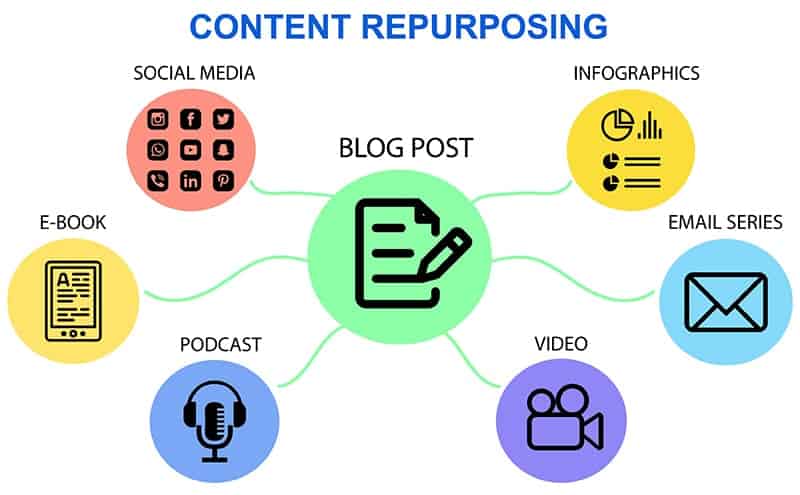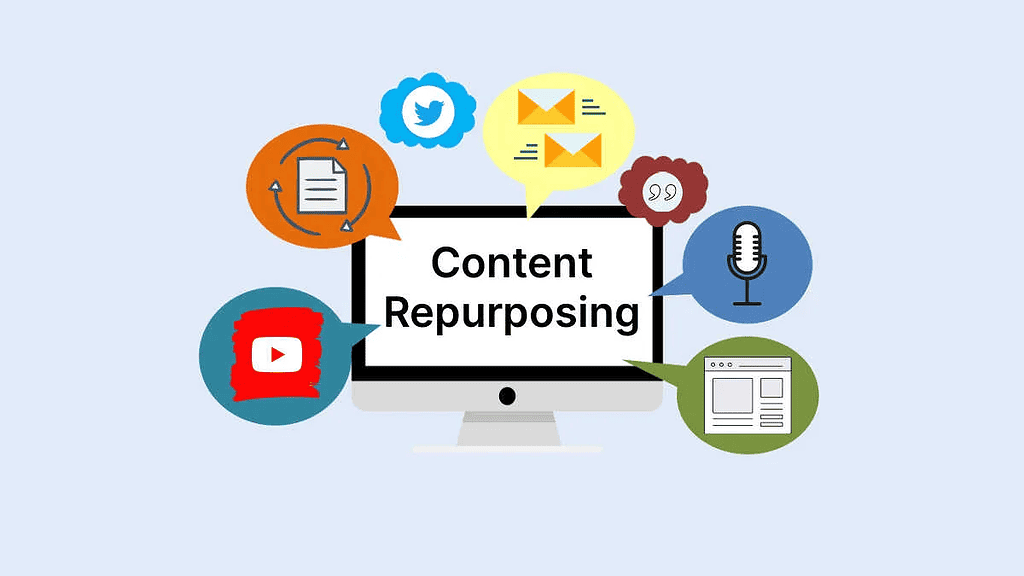Content repurposing is not just a buzzword. It is a crucial aspect of content marketing that often goes overlooked. When executed properly, content repurposing can maximize your content’s reach, save time and resources, and improve your search engine optimization (SEO) efforts. In this article, we’ll delve into the basics of content repurposing, from its definition and importance to effective strategies and measuring success.
Repurposing is the process of taking existing content and transforming it into a new format. For instance, you could turn a blog post into a video or a podcast episode into an infographic. By doing so, you’re not only extending the shelf life of your original content but also ensuring it reaches various segments of your audience.
Defining Content Repurposing
In essence, content repurposing is the process of recycling your existing content by changing its format or targeting a different audience. Successful content repurposing isn’t merely about copying and pasting content into a new format; it requires some thought and strategy.
The Importance of Content Repurposing
Repurposed Contents serves multiple purposes. It amplifies your message by allowing it to reach more people across different platforms. It can help you connect with different segments of your audience, as some might prefer video content, while others prefer reading long-form articles. Moreover, repurposing can help boost your SEO efforts by creating multiple pieces of content around the same keyword themes.
Repurposed contents also extends the lifespan of your content. A single webinar, for instance, could provide material for a blog post, multiple social media updates, an eBook, and more. It enables you to get the most value from your initial content investment.
Different Ways to Repurpose Content
Repurposing can take many forms depending on your content and your audience’s preferences. For example, a well-received blog post could be repurposed into a podcast episode or an infographic. Similarly, the key points from a webinar could be transformed into a series of bite-sized videos or a detailed eBook.
In fact, one of the best examples of content repurposed is the “content pillar” strategy, where a comprehensive piece of content, like a whitepaper or an eBook, is broken down into smaller pieces such as blog posts, social media updates, and infographics.
Choosing the Right Content to Repurpose
Not all content is suitable for repurposing. Therefore, it’s crucial to choose the right pieces. Analyzing your metrics can help identify high-performing content. Look for content that has attracted significant traffic, engagement, or conversions.
Once you’ve selected a piece of content, think about how it can be restructured to fit different formats. Remember, the aim is not to duplicate but to repackage the content in a new, engaging way that provides value to your audience.

Steps to Repurpose Content Effectively
Repurposedcontent requires a structured approach. Start by identifying your most valuable content, then think about how it can be transformed. Does your popular blog post contain stats that could be turned into an infographic? Could your webinar be broken down into a series of blog posts?
Consistency is key in repurposing. Even though the format changes, your repurposed content should maintain the same tone, style, and quality as the original piece.
Measuring the Success of Repurposed Content
Assessing the performance of your repurposed content is as crucial as it is with your original pieces. This helps in understanding what’s resonating with your audience and what isn’t. Use analytical tools to track key metrics such as traffic, engagement, shares, and conversions.
A surge in these indicators following the repurposing of content might indicate its success. However, remember that this is not merely a numbers game. Ultimately, successful repurposing involves creating high-quality that provides value to your audience.
Conclusion
Content repurposing is an effective, efficient way to maximize the reach and lifespan of your content. It involves more than just copying and pasting. It’s about creatively reimagining and reinventing your content to suit different formats and audiences.
Remember, the most successful content repurposing strategies start with quality content. So, always prioritize creating valuable, relevant, and engaging content. Once you have that, repurposing becomes an easy way to amplify your message and increase your content’s ROI.
Now that you understand the basics of repurposing, it’s time to start thinking about how you can incorporate it into your own content strategy. Good luck!










